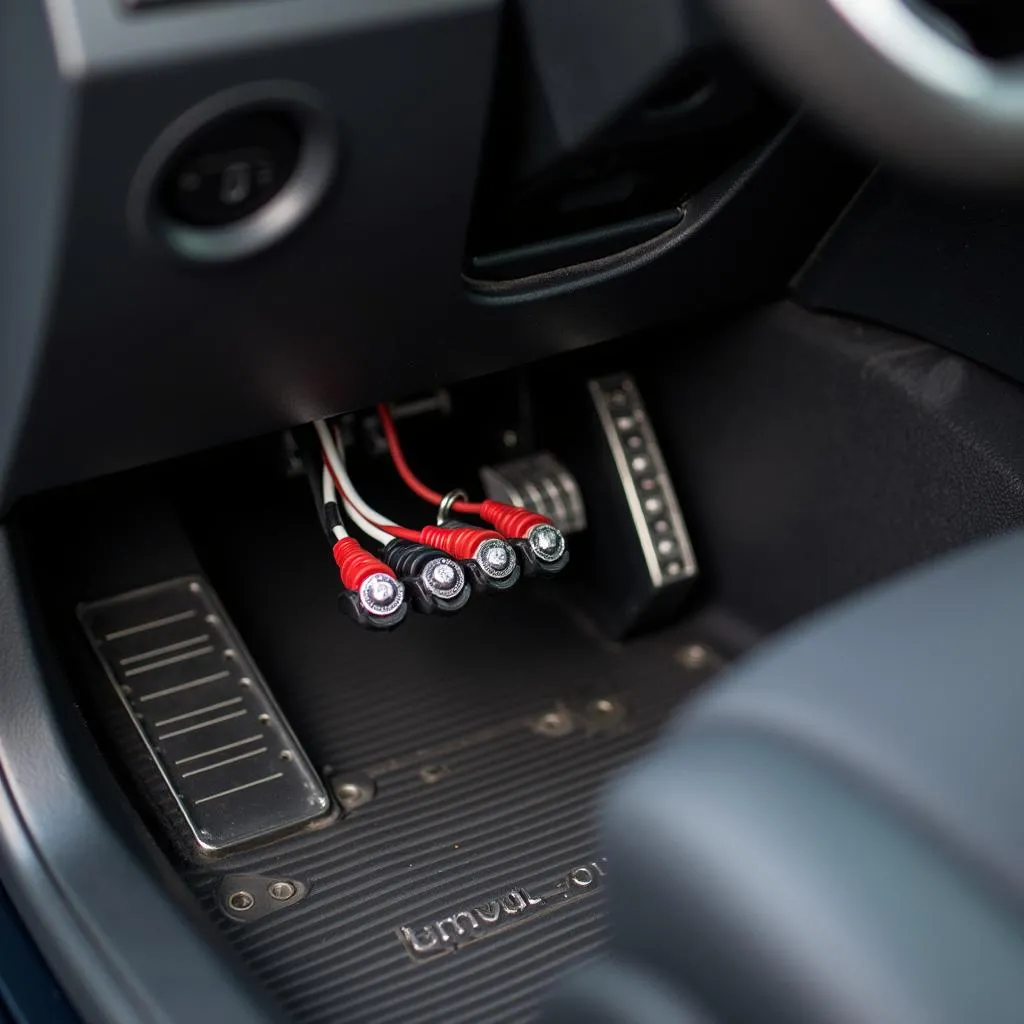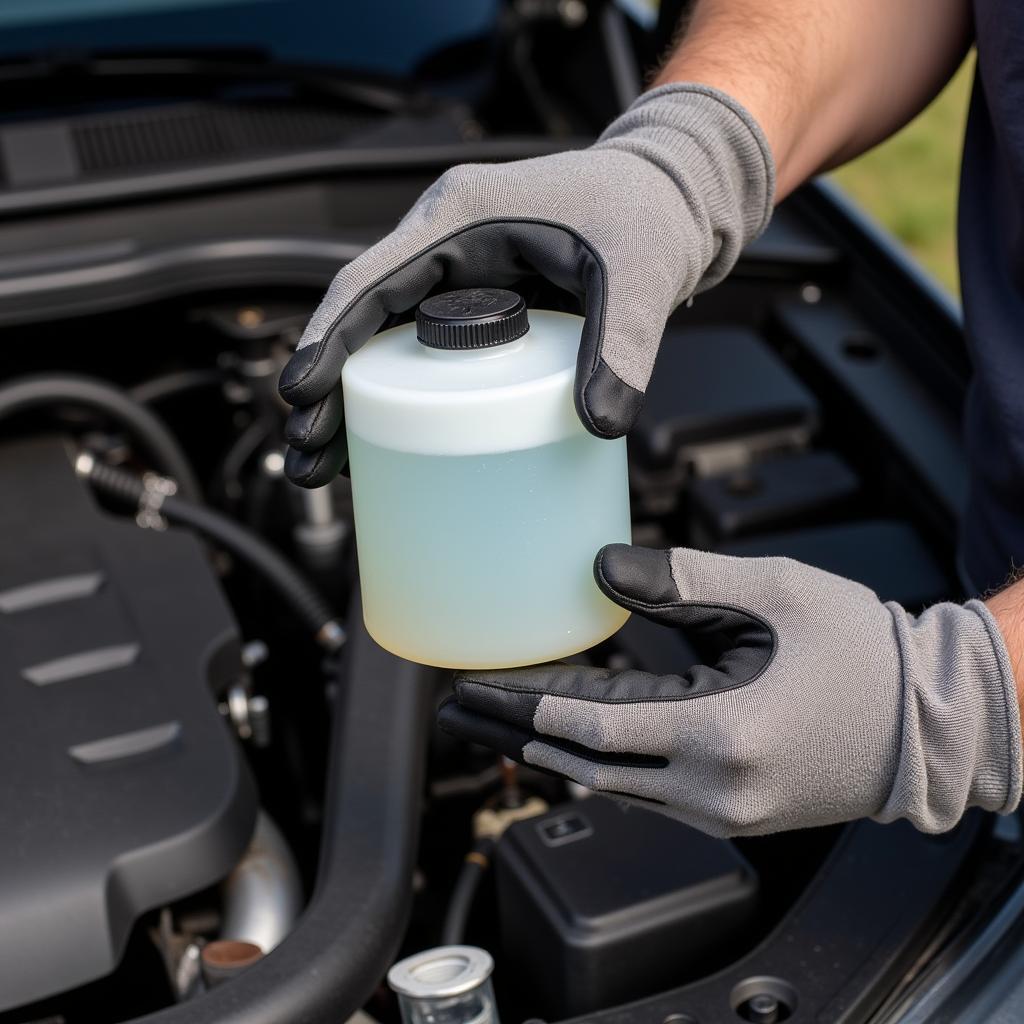A dead car battery is frustrating, especially when you’re unsure of the cause. Is something draining your car battery? This guide dives deep into the common culprits behind a mysteriously draining car battery, offering diagnostic tips and solutions. We’ll cover everything from parasitic draws to faulty components, empowering you to get back on the road quickly.
If you’ve ever experienced the frustration of turning your key only to be met with silence, you’re not alone. A car battery drain can be a perplexing issue. Sometimes, it’s obvious – you left your headlights on. Other times, however, something more sinister is at play, slowly siphoning power from your battery when the car is off. This “parasitic draw” can be caused by a variety of factors, ranging from faulty wiring to malfunctioning components. Identifying the source of the drain is crucial to resolving the issue and preventing future battery problems. This article will help you pinpoint the culprit and get your car back up and running. This could include issues with your car’s electrical system, like the alternator, or aftermarket additions like a car radio usb aux bluetooth.
Identifying the Culprit: Common Battery Drain Causes
Several components and situations can lead to a drained car battery. Understanding these can help you narrow down the possibilities.
Faulty Alternator
The alternator is responsible for recharging the battery while the engine is running. A failing alternator can prevent the battery from receiving a full charge, leading to a gradual drain and eventual failure.
Parasitic Draw: The Silent Killer
A parasitic draw occurs when a component continues to consume power even after the car is turned off. This can be a tricky problem to diagnose as the drain is often small and difficult to detect.
Interior Lights and Accessories
Leaving interior lights on, even for a short period, can drain your battery, especially older, less efficient bulbs. Similarly, accessories plugged into the 12V outlet can continue to draw power even when the car is off.
Bad Battery Terminals and Cables
Corroded or loose battery terminals and cables can create resistance, preventing the alternator from properly charging the battery and eventually leading to a drain.
Faulty Door Switch or Glove Box Light
A faulty door switch can trick the car into thinking a door is open, keeping interior lights on and draining the battery. Similarly, a glove box light that stays on due to a malfunctioning switch can contribute to the drain.
Aftermarket Electronics
Aftermarket installations, such as stereos, alarms, and remote starters, can sometimes be improperly wired, creating a parasitic draw on the battery.
Diagnosing the Drain: Step-by-Step Instructions
Here’s a step-by-step guide to diagnosing a car battery drain:
-
Gather Your Tools: You’ll need a multimeter, a test light, and some basic hand tools.
-
Disconnect the Negative Battery Terminal: This will prevent further drain during the testing process.
-
Connect the Multimeter: Set your multimeter to measure DC amps and connect it in series between the negative battery cable and the negative battery terminal.
-
Check the Amperage Reading: A reading above 50 milliamps (0.05 amps) indicates a significant parasitic draw. A lower reading may still be acceptable, depending on the vehicle and its installed accessories.
-
Isolate the Circuit: Begin pulling fuses one at a time, checking the amperage reading after each fuse removal. A significant drop in the reading indicates the circuit connected to that fuse is the source of the drain. If you have a power inverter drain car battery this could be the culprit.
-
Identify the Component: Once you’ve isolated the circuit, you’ll need to pinpoint the specific component causing the draw. This may involve further testing with a test light or consulting a wiring diagram.
What if I can’t find the source of the drain?
Sometimes, the drain can be elusive, requiring more advanced diagnostic tools and expertise. In such cases, it’s best to consult a qualified automotive technician, especially one specializing in electrical systems. They might even have suggestions for your cd mp3 car stereo radio with bluetooth.
Preventing Future Drains: Proactive Measures
-
Regularly Inspect Battery Terminals and Cables: Clean any corrosion and ensure tight connections.
-
Be Mindful of Interior Lights and Accessories: Double-check that all lights are off and unplug any unnecessary accessories before exiting your vehicle.
-
Address Electrical Issues Promptly: If you notice any signs of electrical problems, such as dimming headlights or slow cranking, have them checked out by a qualified technician.
Conclusion
A draining car battery can be a frustrating experience. By understanding the common causes, following the diagnostic steps outlined above, and taking proactive measures, you can keep your battery healthy and avoid being stranded with a dead battery. Regularly inspecting your battery, minimizing the use of accessories when the engine is off, and promptly addressing electrical problems will significantly reduce your chances of encountering this issue. Something draining car battery? Not anymore!
FAQ
-
How long does a car battery typically last? Typically, car batteries last between 3 and 5 years.
-
Can a car battery drain overnight? Yes, a faulty component or a parasitic draw can drain a car battery overnight.
-
Can extreme temperatures affect battery life? Both extreme heat and cold can shorten a car battery’s lifespan.
-
What is the difference between a deep-cycle battery and a starting battery? A starting battery is designed to deliver a large burst of power to start the engine, while a deep-cycle battery is designed to provide sustained power over a longer period.
-
How can I tell if my alternator is bad? Common signs of a bad alternator include dimming headlights, flickering dashboard lights, and a dead battery. You can also try a bluetooth radio walmart car lighter.
-
What should I do if my car battery dies while I’m driving? If your car battery dies while driving, it likely indicates a failed alternator. Try to pull over to a safe location and call for roadside assistance.
-
Can I jump-start a car with a completely dead battery? Yes, you can jump-start a car with a completely dead battery, but it will require another vehicle with a working battery and jumper cables.


